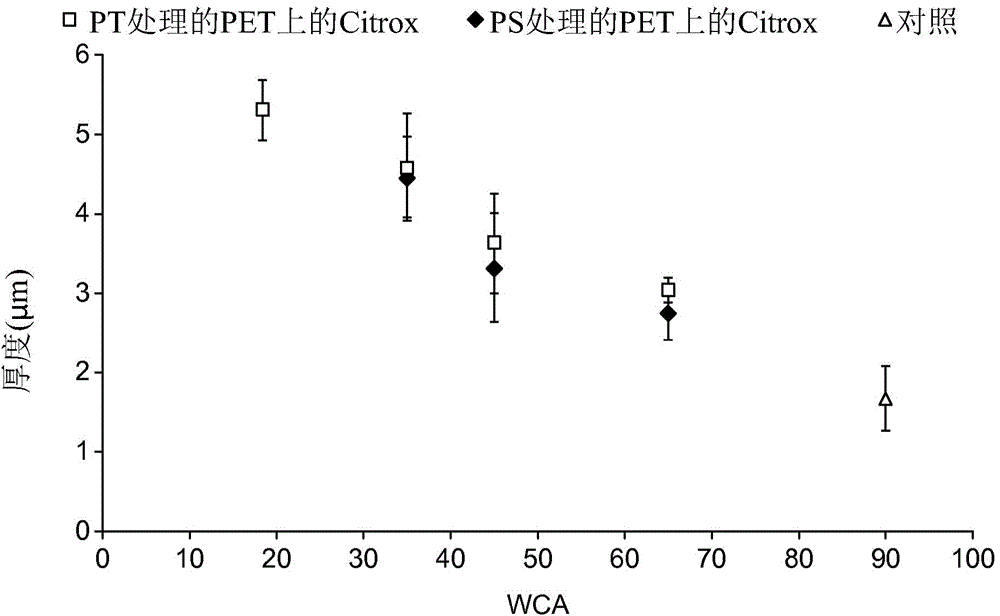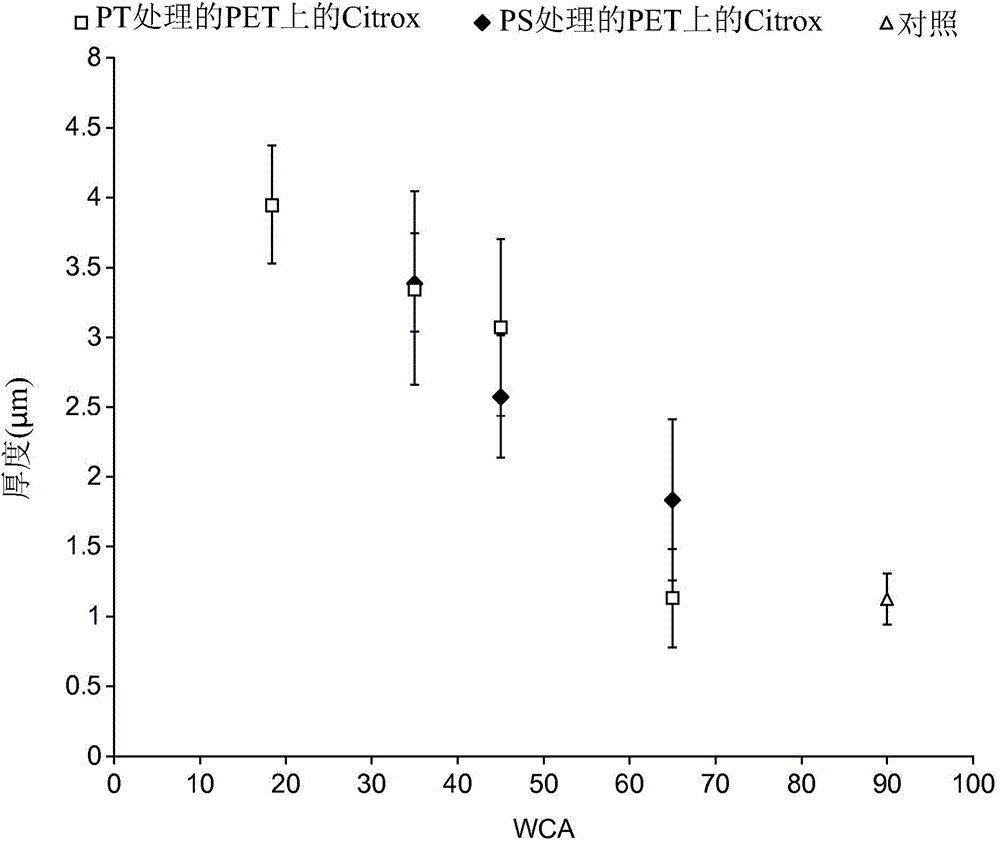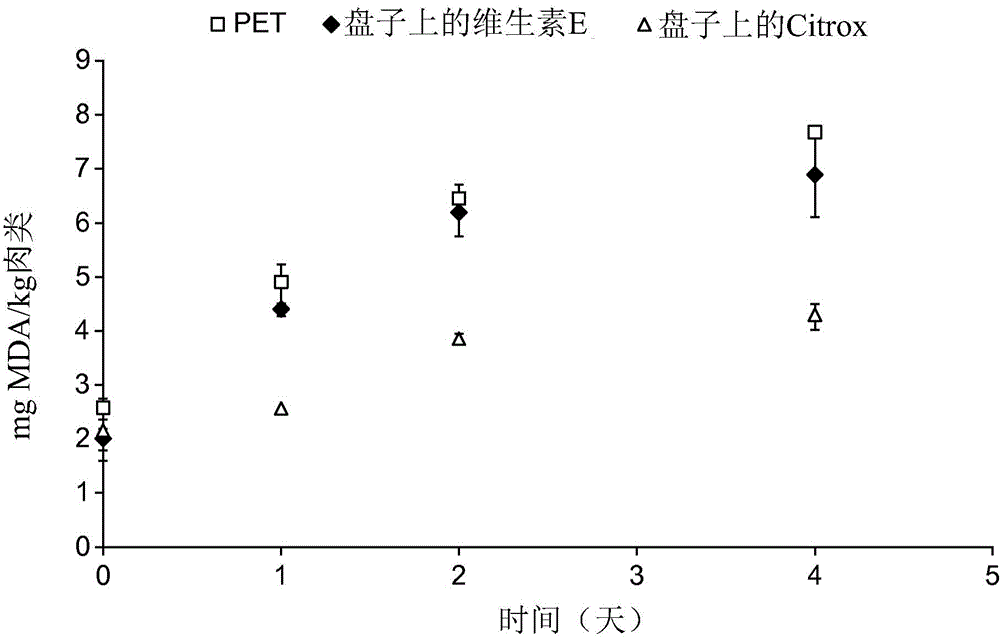Bioflavonoid coated materials
A technology of bioflavonoids and polymer materials, applied in the field of polymer materials, can solve the problems such as the application of bioflavonoid compositions that are not disclosed
- Summary
- Abstract
- Description
- Claims
- Application Information
AI Technical Summary
Problems solved by technology
Method used
Image
Examples
Embodiment 1
[0106] experimental method
[0107] Preparation of Citrox precursor: Citrox HXT powder was dissolved in methanol. The precursors were formulated using either 10% or 15% by weight Citrox in methanol.
[0108] Pretreatment of samples: preliminary He / O with and without polyethylene terephthalate (PET) films and silicon wafers 2 Plasma pretreatment.
[0109] In atmospheric plasma jet processing systems (such as PlasmaStream TM ) by two rounds using 5% O in He 2 The formed plasma activates the substrate. The applied plasma powder was 80%, the CNC speed was 7 mm / s, and the distance from the substrate to the plasma injection hole was 10 mm.
[0110] In reel-to-reel atmospheric plasmas (e.g. Labline TM system) by making the substrate formed between two insulating plates containing 5% O in He 2 The processing chamber passes through three times to activate the substrate. The plasma powder was applied at 1000 W and the sample was passed through the chamber at a velocity of 1.5 m / ...
Embodiment 2
[0155] Impregnation of polystyrene sheets with Citrox
[0156] Polystyrene sheets were treated using plasma immersion ion implantation (PIII) with nitrogen ions at an energy of 20 keV for 800 seconds to form a surface embedded with groups capable of covalently binding bioactive molecules (as in Bilek et al., PNAS, 08( 35):14405-14410, 2011, which is hereby incorporated by reference). PIII-treated and untreated sheets were incubated for 3 hours in tubes filled with Citrox concentrate (PHLC 45) or deionized water (for controls). Contains bioflavonoids in HPLC 45 or "Citrox BC" 45% (total composition of HPLC 45 / Citrox BC). The bioflavonoids were in admixture with biomass residues extracted from bitter oranges such as pectin, sugars and small amounts of organic acids (which constituted the remaining 55%). HPLC 45 is available from Exquim (a company of Grupo Ferrer) as Citrus Bioflavonoid Complex 45% HPLC. After incubation, the sheets were washed thoroughly in the tubes with dei...
PUM
 Login to View More
Login to View More Abstract
Description
Claims
Application Information
 Login to View More
Login to View More - R&D
- Intellectual Property
- Life Sciences
- Materials
- Tech Scout
- Unparalleled Data Quality
- Higher Quality Content
- 60% Fewer Hallucinations
Browse by: Latest US Patents, China's latest patents, Technical Efficacy Thesaurus, Application Domain, Technology Topic, Popular Technical Reports.
© 2025 PatSnap. All rights reserved.Legal|Privacy policy|Modern Slavery Act Transparency Statement|Sitemap|About US| Contact US: help@patsnap.com



